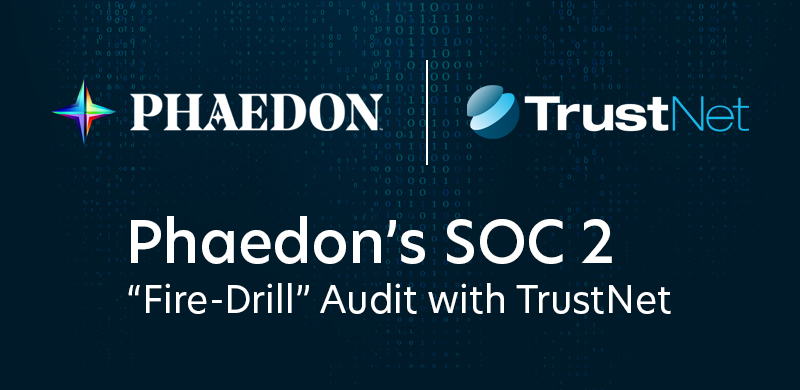What the Constant Evolution of E-payments Affect How You Do Cybersecurity & Compliance

City & Financial Global recently hosted its third annual Payments Regulation and Innovation Summit. They successfully brought together industry leaders to critically discuss the evolving payments landscape. The future of e-payments, fintech, and digital currencies emerged as one of the central themes at the summit, reflecting the constant evolution of our digital economy.
TrustNet, a leading provider of cybersecurity and compliance services, strongly emphasizes the importance of robust security protocols and strict regulatory compliance in our rapidly digitizing world. As e-payment technologies continue to evolve at a breakneck pace, TrustNet underlines the need for businesses to prioritize cybersecurity measures and adhere rigorously to regulatory standards.
The Pros and Cons of E-Payments for Companies and Businesses
The digital revolution has significantly shifted how companies and businesses transact, making e-payments increasingly prevalent. Here, we explore the advantages and disadvantages of adopting e-payments.
Advantages of E-Payments
— Convenience: E-payments provide an easy and quick alternative to traditional cash or check transactions. With just a few clicks on a computer or smartphone, transactions can be completed anytime, anywhere.
— Security: E-payments offer a higher level of security than conventional payment methods. Transactions are encrypted and processed securely, minimizing the risk of fraud and theft.
— Speed: E-payments are processed swiftly, often within seconds, making them ideal for time-sensitive transactions.
— Reduced Costs: E-payments can be more cost-effective than traditional methods. They eliminate the need for paper checks and postage expenses and can lower the fees related to wire transfers.
— Accessibility: E-payments are available to people who may not have access to traditional banking systems, including those in remote or underbanked areas.
Disadvantages of E-Payments
— Technical Issues: As e-payments depend on technology, they are susceptible to glitches, server outages, and other technical problems. Such issues can result in transaction delays or failures.
— Security Risks: Despite the generally high security of e-payments, there is always a risk of fraud and theft. Cybercriminals can employ various methods to steal payment information, including phishing scams and malware.
— Limited Consumer Protection: E-payments may not offer the same level of consumer protection as traditional methods. For instance, obtaining a refund for an erroneous payment can be challenging.
— Fees: Some e-payment systems may charge transaction fees, depending on the payment method and amount.
— Dependence on Internet Access: E-payments require Internet access and thus may not be available in areas where Internet connectivity is limited or unreliable.
Understanding the pros and cons of e-payments can help businesses make informed decisions about whether to adopt this transaction method. When evaluating these factors, it’s crucial to consider the nature of the company, its target market, and operational needs.
If you want to dive deeper into digital transactions, we’re here Hereto guide you
Exploring Cybersecurity and Compliance Risks Associated with E-Payments
The advent of e-payments also comes with cybersecurity and compliance risks that organizations must navigate.
Threat Management
Threat management is a critical aspect of any cybersecurity strategy. In the context of e-payments, threat management involves identifying potential cyber threats, assessing their potential impact, and taking measures to mitigate them. This can include everything from installing robust firewalls to conducting regular penetration tests.
PCI DSS
The Payment Card Industry Data Security Standard (PCI DSS) is a set of security standards designed to ensure that companies that accept, process, store, or transmit credit card information maintain a secure environment. Non-compliance can result in hefty fines and worse, a data breach can lead to reputational damage and loss of customer trust.
SOC
System and Organization Controls (SOC) are standards designed to help measure how well a given service organization conducts and regulates its information. For e-payments, SOC 2 compliance is particularly relevant as it focuses on a business’s non-financial reporting controls relating to a system’s security, availability, processing integrity, confidentiality, and privacy.
ISO 27001
ISO 27001 is an international standard for managing information security. It provides a framework for establishing, implementing, maintaining, and continually improving an information security management system. This is crucial for e-payment systems where sensitive financial information is constantly processed and stored.
It’s important to note that these are just some steps a company can take to manage cybersecurity and compliance risks associated with e-payments. These risks are evolving, so staying vigilant and proactive is vital to maintaining a secure e-payment environment.
Navigating the E-Payment Revolution: A Balancing Act of Innovation and Security
E-payments are evolving at a rapid pace, bringing a host of opportunities and challenges. On one hand, integrating e-payment systems into an increasing number of services has made transactions more convenient and efficient than ever before. On the other hand, this growing reliance on digital payments has also amplified their cybersecurity risks.
Being proactive in addressing potential threats enhances a company’s standing among stakeholders and bolsters its overall integrity. It shows that the organization is not just riding the wave of digital transformation but is also mindful of the inherent risks and is taking the necessary steps to mitigate them.
By partnering with TrustNet, businesses can confidently navigate the rapidly evolving digital landscape, knowing that their e-payment systems are efficient, convenient, secure, and compliant.




